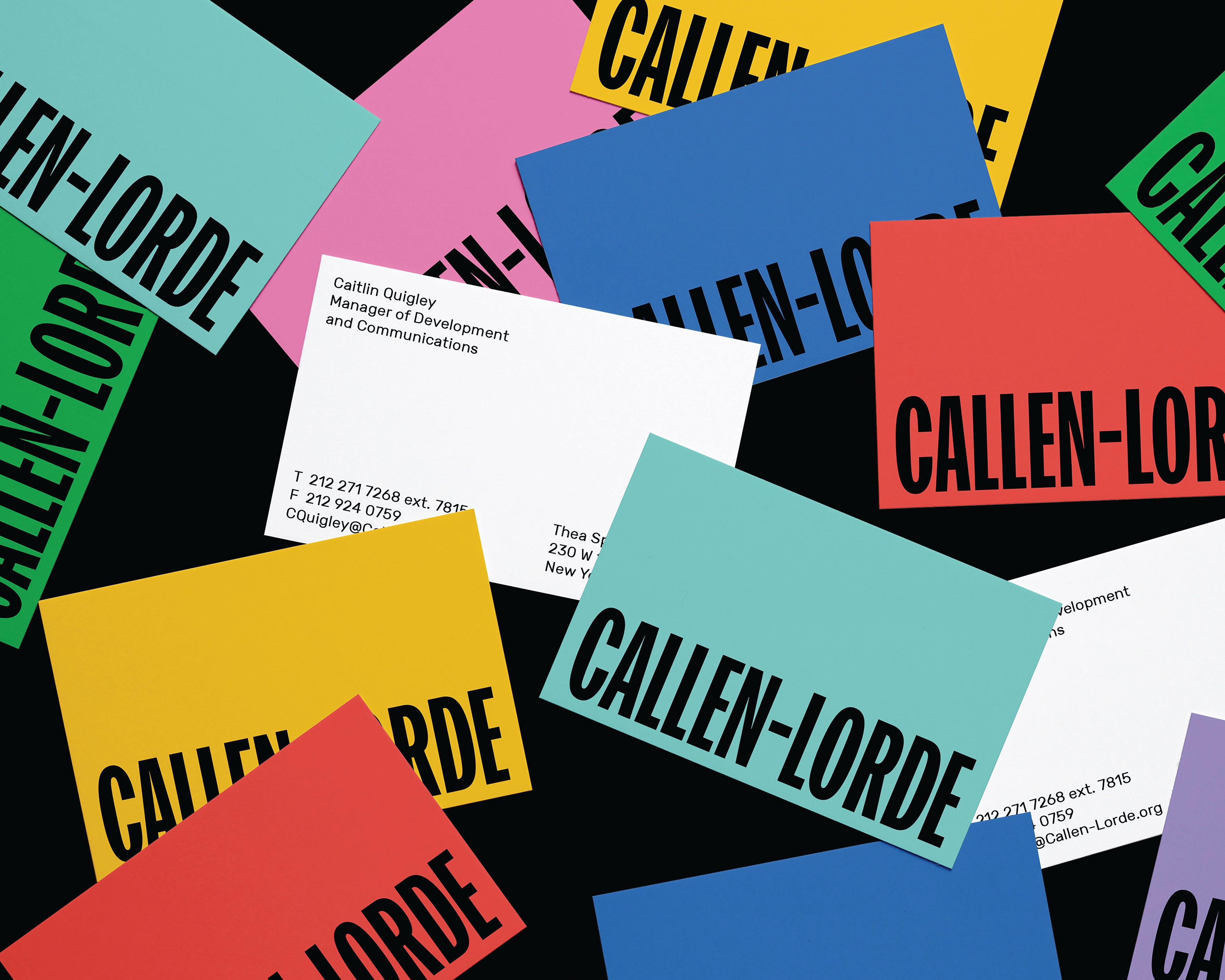
Escape Into The World of Geoffroy De Crécy’s Therapeutic Animations
Drop everything you are doing right and watch these animations.
Through robots, animation, illusions, and pools, Geoffroy De Crécy captures the simplicity and beauty of empty places, isolation, and automation like no one else. The hypnotic power and movement of the digital world are what is motivating French illustrator and animator Geoffroy to create his endlessly satisfying and therapeutic work. From studying History to working in the early days of the video games industry to his current fascination with AI, we explore his roots and the direction he wants to take his work in the future.
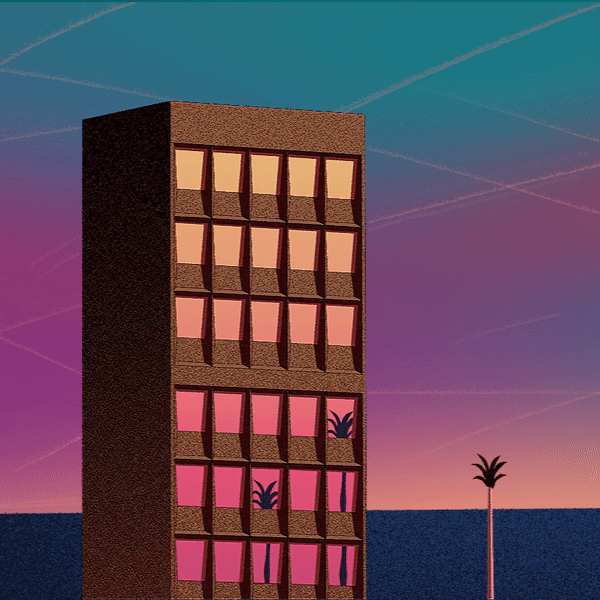
The beauty of technology, robots, and city life is what French illustrator Geoffroy De Crécy looks to capture with his work. This animation was a summer holiday sign-off created during Europe's record-breaking heatwave of 2018.
He knew he needed to find a job and remembered he could draw because that's all he did as a child
Framing the unusual of everyday life and telling stories through it is a rare art, especially without the use of characters. Artists like William Eggleston and Stephen Shore, who have the ability to capture the mundane of daily life through photography, fascinate Geoffroy. In many ways, he captures this same beauty through animation and illustration.
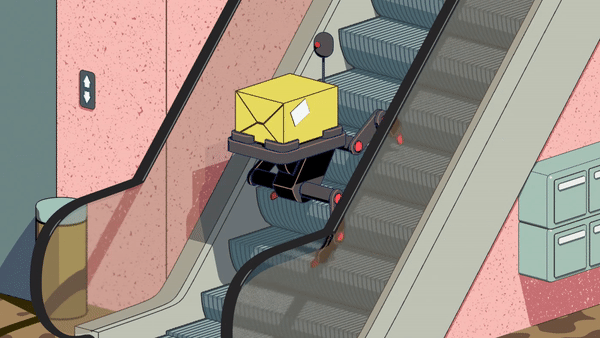
Geoffroy's calm and beautiful loops capture a world deserted by humans.
Working as an artist and also on commercial projects for the likes of The Atlantic Magazine, Google, and Paris Worldwide Magazine, Geoffroy was born into a family of makers but didn't fall into art straightaway.
After studying History and Politics at university, Geoffroy entered the workforce a little puzzled in which direction he should take. He knew he needed to find a job and remembered he could draw because that's all he did as a child. He entered the video game industry and became a professional in animated pictures. This was the early years of the industry when everything felt new and exciting.
“I used to like Mad Men, it was a point of inspiration for some of my earlier work. But now I’m more interested, in term of mood and design, by periods like the 80s”
Despite having a successful career as an animator, Geoffroy knew something was missing as he felt he had so much more to give creatively. He told us his artistic needs couldn't be met in a technical environment, so he needed to leave in order to be more experimental.
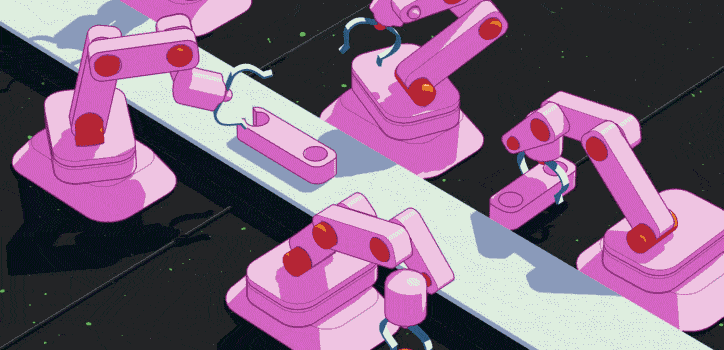
Instead of fearing robots and machines, Geoffroy encourages people to look at their beauty and simplicity in the modern world.
But working in the video games world left a mark on him. Even after leaving the industry, all his work was "driven by technology" he said. The power of digital tools has always been what fascinates him. Robots and machines turned into the subjects of his work, more or less anything that moves digitally he drew inspiration from.
His approach to work is also like that of gaming, going straight into 3D software, avoiding the sketchbook completely. He starts with simple shapes before playing around with the angles, framing, and size.

Geoffroy worked in the video games industry after finishing university, he became transfixed on the evolution of robotic life in modern society and left the industry to pursue his passion through art and digital graphics.
"When working on a complex loop, the moment you finally succeed in making your last picture exactly identical with the first one is a moment of great satisfaction"
Geoffroy has a very mysterious aesthetic, with light and emptiness being at the heart of his work. But there is also another side to him, one that plays around with summer backdrops and another with elements that remind us of Mad Men. We asked how he developed this style?
"I used to like Mad Men, it was a point of inspiration for some of my earlier work. But now I’m more interested, in terms of mood and design, by periods like the 80s. For the light and emptiness, it’s certainly linked to my willingness to becoming a good illustrator. To sum up, I create some lightly animated illustrations.”

He brings life into his subjects and asks questions like do the machines need us?
His style has become more distinctive over the years. From capturing the loneliness of city life to a poolside illusion artwork that is a tribute to David Hockney, Geoffroy has an acquired eye for composition.
”I don’t like hyper-realistic characters, and cartoony ones are often stereotypical, Pixar likes, and over-animated. So I find ways to tell stories without characters"
We asked him what he thinks people feel when they see his work vs. what he wants them to feel? He said he doesn't actually know what people feel. But he's been told there is a "kind of satisfaction in watching my loops". He says this is something he is aiming for in his work. "When working on a complex loop, the moment you finally succeed in making your last picture exactly identical with the first one is a moment of great satisfaction", he told us. So this is something he shares with the viewers, which he finds nice in a way.
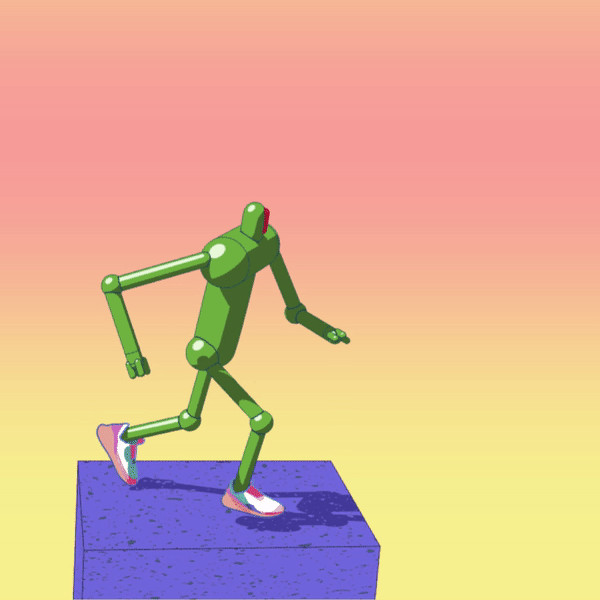
Robotic parkour and animation with music by Etienne de Crécy.
As he continues to work on more and more illustration projects, Geoffroy says he puts "more attention on the composition and colors of my animations." He has got to the point where he uses almost no camera moves, he says this forces him "to make everything else as good as possible." He hopes through this technique there is a real visual pleasure for the viewers.
By creating amazing visuals that manipulate light and water, his work encourages you to enter a world of escapism, even if just for a minute

Although most of Geoffroy's work explores summer and deserted cities, his work also visits the robotic work of winter.
His work is undeniably satisfying and therapeutic to watch. But we're curious why the loneliness of city life is ever-present in his work. He asked him what drives his work? He told us:
"I can add that I’m far from being a lonely person. But I like to work by myself. One simple reason for the lack of human beings in my animations is that I think digital software is not good at representing them.
"I don’t like hyper-realistic characters, and cartoony ones are often stereotypical, Pixar likes, and over-animated. So I find ways to tell stories without characters
Robots and AI are subjects he has mastered with his recent work. We asked if there is another area of society that he really wants to explore with his art, he replied with, "I’m very interested in architecture."
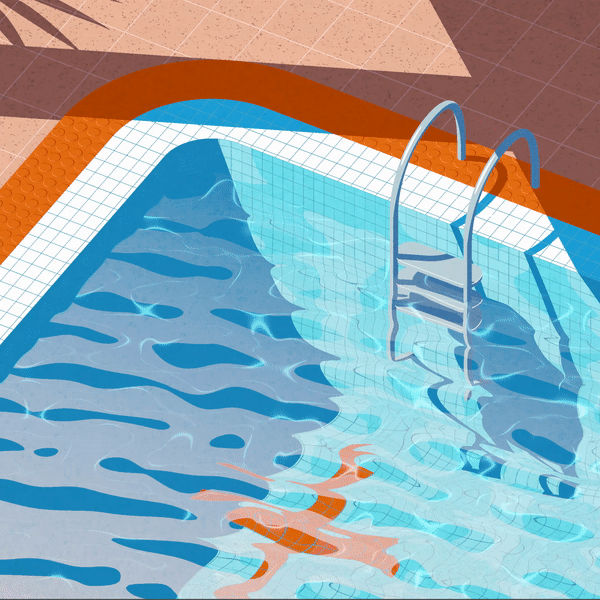
Geoffroy created a series around indoor and outdoor swimming pools and the life around it when no one is present, this one was indoors. This is his also last pool of 2018.
This summer his work has transported thousands of people, including myself, into dreamy places sometimes out of eyesight. By creating amazing visuals that manipulate light and water, his work encourages you to enter a world of escapism, even if just for a minute. There is also a thought-provoking side to him though. His automated work asks questions about their existence in society, whether they are for human use or have a function of their own. We're excited to see what he releases this winter, maybe there's even a feature film on the way.
One of the world's most beautiful careers, illustrators are working in new and different ways. Expanding their field into animation and digital art, this practice has never been so diverse. Explore A Life In Illustration through our book.


